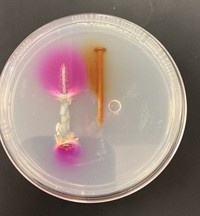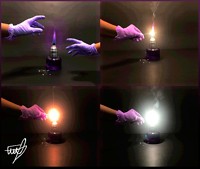Advertisement
Grab your lab coat. Let's get started
Welcome!
Welcome!
Create an account below to get 6 C&EN articles per month, receive newsletters and more - all free.
It seems this is your first time logging in online. Please enter the following information to continue.
As an ACS member you automatically get access to this site. All we need is few more details to create your reading experience.
Not you? Sign in with a different account.
Not you? Sign in with a different account.
ERROR 1
ERROR 1
ERROR 2
ERROR 2
ERROR 2
ERROR 2
ERROR 2
Password and Confirm password must match.
If you have an ACS member number, please enter it here so we can link this account to your membership. (optional)
ERROR 2
ACS values your privacy. By submitting your information, you are gaining access to C&EN and subscribing to our weekly newsletter. We use the information you provide to make your reading experience better, and we will never sell your data to third party members.
Letters to the editor
Periodic Graphics
I always look forward to reading through each C&EN issue I get, and there are many aspects of the magazine I enjoy. Today, I’d like to tell you how much I enjoy reading your one-page Periodic Graphics pieces. They are always eye catching, informative, and fun to read. I love the one in the Nov. 19 issue about how different light bulbs work (page 33). I had no idea the tungsten filament of an incandescent bulb was heated to 2,700 °C; wow—that’s hot! This piece does a great job of visually educating one on the key attributes of four different bulbs. Keep up the great work!
ACS 2017 IRS Form 990 available
The American Chemical Society’s 2017 IRS Form 990 is now available on the ACS website. To access the information, go to www.acs.org/acsirsform990. Please scroll toward the bottom of the page to access the 2017 form and related Guide to Schedule J for explanatory information regarding ACS executive compensation. If you have any access problems, please contact service@acs.org.
Timothy Rydel
Chesterfield, Missouri
Water from air
I would like to comment on the very educational article regarding water from air in the C&EN issue of Oct. 15 (page 26). One of the first science experiments that I was shown was the deliquescence of calcium chloride salt. You place the salt in a dish and leave it exposed to air. Return later and the salt has become a puddle of liquid, a solution of calcium chloride. I don’t have data on the cost of recovering the water from the solution, but one method would be via ion exchange. Cation- and anion-exchange resins in the acid and basic forms will remove the salt, yielding essentially pure water. Regenerate the resins to acid and hydroxide forms with acid and base.
Clarence George Johnson Jr.
Memphis, Tennessee




Join the conversation
Contact the reporter
Submit a Letter to the Editor for publication
Engage with us on Twitter